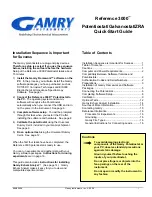
D-160TS-7-E
6
4. PRINCIPLE OF OPERATION
As a stream of fluid runs through the pipe, von Karman's vortices form and shed proportionally to the
flowrate downstream of the bluff body located perpendicular to the stream of flow. Thermistor sensors in
the sensor housing pick up these Karman vortices.
Part of the metered fluid is introduced through the bypass inlet upstream of the bluff body into the
sensor housing. This bypass flow is divided into two parts downstream of the filter, then passes a pair of
thermistor sensors and returns to the main pipe section through the outlets on both sides downstream
of the bluff body.
A pair of thermistor sensors forms two arms of a bridge circuit and are heated by weak electric current
supplied from a regulated current source.
As the fluid flows, alternating pressure changes induced by Karman vortices on either sides of the bluff
body cause alternating changes in the outflow velocity synchronous with Karman vortices in the bypass
current flowing across the sensor area and a minute temperature change results on the surface of
thermistor sensors.
Thus the resistance values of a pair of sensors change alternately and the resultant alternating current
synchronous with Karman vortices is picked up from the bridge. This signal is amplified and shaped to
obtain a pulse output proportional to the flowrate.
Fig. 4.1 Principle of Operation
Thermistor Sensors
Filter
Block Valve
Block Valve
Bypass Inlet
Bypass Outlet
Sensor Housing
Bluff Body
Converter (PA21)
Regulated
Current
Circuit
Power Source
Power
Supply
Sensor Volt.
Control Circuit
CPU
Sensitive
Amplifier
A/D
Converter
Sensors
Probe
Pulse
Output






































